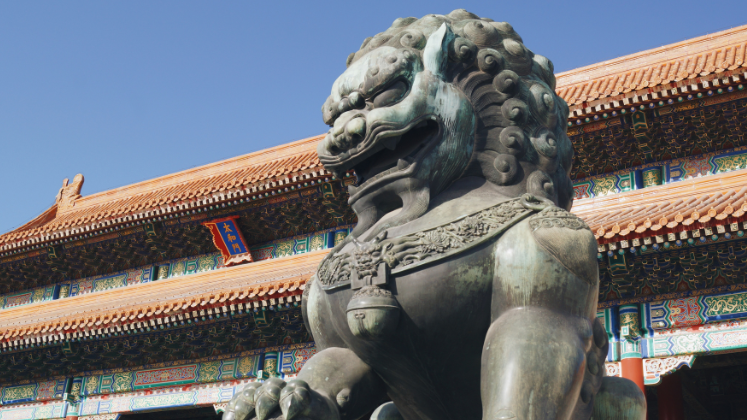What explains the rise of ISIS and what does its ascent suggest about the future of the Middle East? In ISIS: A History, LSE Professor Fawaz A. Gerges provides a history of the emergence and growth of ISIS that dispels with many myths and misconceptions. Chris Harmer hails this as an important book, written with a clarity that will appeal within and beyond academic, diplomatic and policy-making circles.
If you are interested in this review, you may like to listen/watch a recording of Professor Gerges’s lecture at LSE, ‘ISIS: A History’, recorded on 3 May 2016.
ISIS: A History. Fawaz A. Gerges. Princeton University Press. 2016.
 This timely history gives a clear-sighted account of the ascent of the so-called Islamic State (IS) – one with far-reaching implications. The book’s findings and conclusions have profound relevance not just for the future of IS in Iraq and Syria, but also for salafi jihadism, regional security in the Middle East and North Africa and international peace and security.
This timely history gives a clear-sighted account of the ascent of the so-called Islamic State (IS) – one with far-reaching implications. The book’s findings and conclusions have profound relevance not just for the future of IS in Iraq and Syria, but also for salafi jihadism, regional security in the Middle East and North Africa and international peace and security.
ISIS: A History dispels myths and misconceptions about global jihadism and examines the conditions that enabled IS to seize vast swathes of territory in Iraq and Syria and proclaim a ‘caliphate’ in June 2014. Fawaz A. Gerges delivers a robust rebuttal of recent ahistorical accounts that variously portray IS as the invincible and unassailable leader of a monolithic jihadism; a linear progression of Al Qaeda (AQ); or as a product of the Arab Spring. ISIS: A History contests all of these narratives.
From the Arab Spring to the Establishment of the Islamic State
The book shows how, by 2010, the group founded by Abu Musab al-Zarqawi in Iraq was on the brink of implosion. Its targeting of civilians, suicide bombings, kidnappings and beheadings had met with increasing Sunni resistance, most notably from the sahwa – or awakening councils – which were at war with al-Zarqawi’s brand of genocidal sectarianism.
It recalls how the Arab Spring uprisings were not, for the main part, characterised by fundamentalist religious symbolism or the black flags of AQ or IS, but rather by peaceful civil protest and a common desire for more inclusive, less autocratic and more representative governance. The linking of salafi jihadism with the Arab Spring is given short shrift in this history, not least because parliaments and participation in electoral politics are considered blasphemous by IS, which seeks a return to hakimiyya – God’s sovereignty and laws and the rules of seventh-century Arabia.
The evidence that Gerges pieces together presents a picture of a movement that perhaps owes little to the charisma of its leaders, but a great deal to the US-led invasion of Iraq and the post-war dismantling of state structures. A point made with emphatic clarity throughout the book is that: ‘[t]he destruction of the Iraqi state in 2003 was the most important variable in the emergence of Al Qaeda in Iraq and its subsequent rebirth as ISIS’.
 Image Credit: (Wikipedia Public Domain)
Image Credit: (Wikipedia Public Domain)
The book narrates how, during the disastrous post-war era, the process of de-Baathification and the establishment of a sectarian-based political system polarised Iraq along Sunni-Shia lines. This sectarian rift deepened and widened under the premiership of Nouri al-Maliki. Increasingly, authoritarian rule that centralised power in the hands of Shia Islamists further fuelled the sectarianism on which IS feeds.
Critically important for the ascent of IS was the exclusion of the sahwa under al-Maliki’s leadership, which led senior Baathists to defect to AQ and IS in Iraq, providing the military prowess that enabled its fighters to sweep into the country’s Sunni heartland. The second driving force behind the ascent of IS was, of course, Syria’s descent into war – the book further narrates how this empowered IS, principally through the formation of alliances of convenience with Sunnis in revolt against the regime of Bashar al Assad.
‘Remain and expand’ – Islamic State motto vs ‘Bread, freedom and social justice’ – Arab Spring slogan
Another dominant theme that emerges in ISIS: A History is the extent to which IS has been riven with internal dissent and beset by external opposition. In chronicling the bloody struggle for leadership of the jihadist movement, Gerges documents how this is fiercely contested by AQ in Syria and by other salafi-jihadist groups. The seizure of territory and resources in Iraq and Syria cannot be ascribed to one united monolithic jihadist movement. While IS has proved adept in the formation of alliances of convenience to achieve its war aims, these have been, and will continue to prove, temporal and divisive. The defining characteristic of IS in this history is its mastery of the art of making enemies and strategic miscalculations, which have left the movement over-extended, waging war in multiple battles on multiple fronts.
The conclusions reached in this analysis are unequivocal – the writing is already on the wall and the movement cannot live up to its motto of remaining and expanding: ‘[t]o think the unthinkable, a collapse of the “Islamic State” might not be imminent but it is conceivable in the near future’. Although many caveats and qualifications may delay the penning of IS’s obituary any time soon, these do not detract from the author’s principal conclusions that IS is a doomed, structurally defective movement, lacking any manifesto for governance and bereft of ideas or policies. This analysis should not invite complacence about the menace of IS. The book has already proved prophetic in its assessment that as the movement loses territory, it will make spectacular strikes elsewhere. The attacks in Brussels took place shortly after the book went to press.
With little to offer Sunni communities in the future other than genocidal war, the worst of the distant past and the destruction of fourteen centuries of progress and enlightenment, the movement cannot sustain its hadanah sha’biyya (social base) or establish the broader constituency it will need to survive. Its military prowess and spectacular attacks in the region and the west may prove attractive to young fighters, but it is essentially a hyper-sectarian youth movement bereft of sustainable support. Professor Gerges asserts that no prominent Muslim scholar supports the ‘caliphate’ or its self-anointed caliph – indicted even by radical Islamist scholars as a ‘theocratically illiterate mediocrity’ with ‘no leadership skills’.
If this reading of recent history is correct, then the implications and magnitude of the challenges are clear: remove the conditions through which IS thrives – despair, sectarianism, abject poverty and war – and the group will atrophy and wither. If IS is a manifestation of the breakdown of state institutions, then fragile sectarian and authoritarian state systems must be rebuilt on more legitimate foundations, which will require inclusive and representative government that can meet the needs of their citizens. If IS is above all a youth movement that appeals to the alienated and poor, then the needs of the region’s massively growing youth, currently beset by poverty and unemployment, must be given an alternative other than political authoritarianism, economic and developmental failure and poor governance.
Written and edited with pellucid clarity, ISIS: A History is an important book that will have broad appeal beyond academic, diplomatic and policy-making circles. It will perhaps resonate most deeply with those who have a stake in peaceful reform of the region, many of whom have opposed the forces that derailed one of the greatest mass movements of civil protest in recent history:
The challenge is to provide hope to the millions of men and women who called for justice, freedom and a life with dignity, as we saw during the Arab Spring uprisings, while simultaneously convincing them that there are non-violent options that can bring about meaningful and substantive political change. Until we do, the menace of the ‘Islamic State’ and similar Salafi-jihadist groups will remain a problem both for the Arab-Islamic world and for the international community.
Chris Harmer is a journalist and writer with a background in foreign affairs, development and humanitarian issues. She was a producer and editor of international news and current affairs programmes for the BBC World Service. Read more reviews by Chris Harmer.
Note: This review gives the views of the author, and not the position of the LSE Review of Books blog, or of the London School of Economics.






